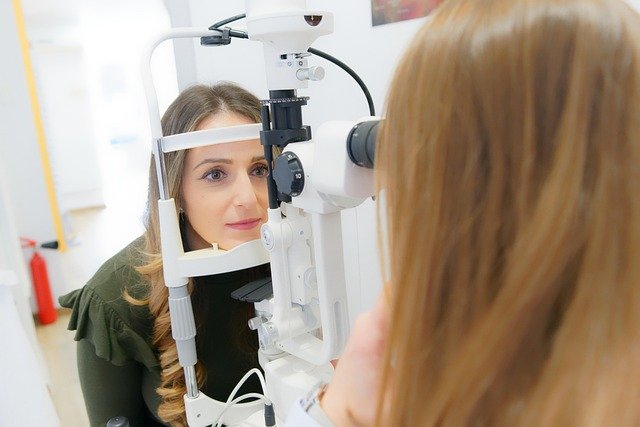Leg Blood Clots: Symptoms, Causes, and When to Seek Help
Blood clots in the legs, also known as deep vein thrombosis (DVT), are a serious medical condition that can have potentially life-threatening consequences if left untreated. These clots typically form in the deep veins of the legs and can cause pain, swelling, and other symptoms. Understanding the signs, causes, and risk factors associated with leg blood clots is crucial for early detection and prompt medical intervention. This article will provide a comprehensive overview of leg blood clots, including their symptoms, causes, and when to seek medical attention.

What Are the Common Symptoms of Leg Blood Clots?
Recognizing the symptoms of leg blood clots is essential for timely diagnosis and treatment. While some individuals may experience no symptoms at all, others may notice one or more of the following signs:
-
Swelling in one leg, usually in the calf or thigh
-
Pain or tenderness in the affected area
-
Warmth in the skin around the clot
-
Redness or discoloration of the skin
-
A feeling of heaviness in the leg
-
Visible surface veins
It’s important to note that these symptoms can sometimes be mistaken for other conditions, such as muscle strains or cellulitis. However, if you experience any of these signs, especially if they occur suddenly or worsen over time, it’s crucial to seek medical attention promptly.
What Are the Main Causes and Risk Factors for Leg Blood Clots?
Understanding the causes and risk factors associated with leg blood clots can help individuals take preventive measures and identify their personal risk level. Some of the primary causes and risk factors include:
-
Prolonged immobility: Sitting for long periods, such as during long flights or car rides, can increase the risk of blood clots.
-
Surgery or injury: Major surgeries, especially those involving the legs, hips, or abdomen, can increase the likelihood of clot formation.
-
Obesity: Excess weight puts additional pressure on the veins in the legs, potentially leading to clot formation.
-
Pregnancy and postpartum period: Hormonal changes and increased pressure on the veins during pregnancy can raise the risk of blood clots.
-
Certain medical conditions: Conditions such as cancer, heart disease, and inflammatory bowel disease can increase the risk of clot formation.
-
Age: The risk of developing blood clots increases with age, particularly after 60.
-
Family history: A genetic predisposition to blood clotting disorders can increase the likelihood of developing leg blood clots.
-
Smoking: Tobacco use can damage blood vessels and increase the risk of clot formation.
How Are Leg Blood Clots Detected and Diagnosed?
When a leg blood clot is suspected, healthcare providers employ various diagnostic methods to confirm the presence of a clot and determine its location and severity. The most common diagnostic tools include:
-
Physical examination: A healthcare provider will assess symptoms and examine the affected leg for swelling, tenderness, and discoloration.
-
Duplex ultrasound: This non-invasive imaging test uses sound waves to visualize blood flow in the veins and identify any blockages.
-
D-dimer blood test: This blood test measures a substance that is released when a blood clot breaks down, helping to rule out the presence of a clot.
-
Venography: In some cases, a contrast dye may be injected into the veins to create detailed X-ray images of the blood flow.
-
CT scan or MRI: These advanced imaging techniques may be used to obtain more detailed images of the blood vessels and surrounding tissues.
What Are the Potential Complications of Untreated Leg Blood Clots?
Leg blood clots can lead to serious complications if left untreated. One of the most severe potential outcomes is pulmonary embolism (PE), which occurs when a portion of the clot breaks off and travels to the lungs. PE can be life-threatening and requires immediate medical attention. Symptoms of PE may include:
-
Sudden shortness of breath
-
Chest pain that worsens with deep breathing
-
Rapid heartbeat
-
Dizziness or fainting
-
Coughing up blood
Additionally, untreated leg blood clots can lead to long-term complications such as post-thrombotic syndrome, which can cause chronic pain, swelling, and skin changes in the affected leg.
When Should You Seek Medical Help for Suspected Leg Blood Clots?
Given the potential severity of leg blood clots and their complications, it’s crucial to seek medical attention promptly if you suspect you may have a clot. You should contact your healthcare provider or seek emergency care if you experience:
-
Sudden swelling in one leg, especially if accompanied by pain or tenderness
-
Unexplained leg pain, particularly if it worsens when standing or walking
-
Warmth or redness in the affected area
-
Visible changes in the color of your skin, such as pallor or a bluish tint
-
Any symptoms of pulmonary embolism, such as sudden shortness of breath or chest pain
Early detection and treatment of leg blood clots can significantly reduce the risk of complications and improve overall outcomes. If you have concerns about your risk for blood clots or experience any suspicious symptoms, don’t hesitate to consult with a healthcare professional.
This article is for informational purposes only and should not be considered medical advice. Please consult a qualified healthcare professional for personalized guidance and treatment.




